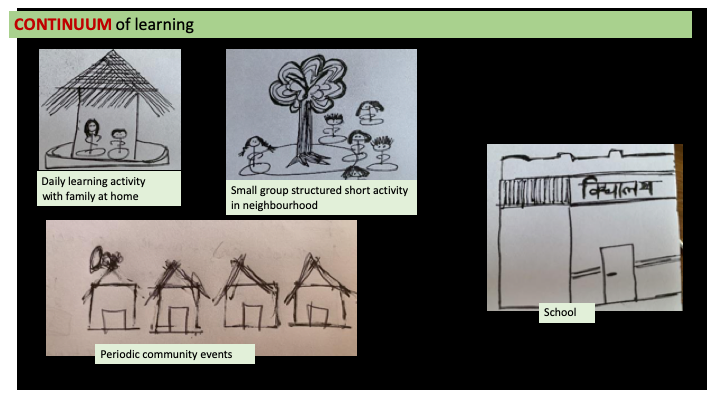Rukmini Banerji
RISE Intellectual Leadership Team
Blog
The school closures from COVID-19 mean larger than usual learning losses and hence cannot just be “business as usual”—here are some tips about using the COVID break as a chance to not just mitigate from the losses, but do better.
Two key points for foundational skills:
Pratham’s decade long work has shown that in 30 to 50 days, focused work can get children to learn reading and basic math competencies or foundational skills for the age group 7/8 and above.2 With strong focus and simple techniques, this can be possible. Pratham’s instructional model “Teaching-at-the-Right-Level” has been repeatedly been evaluated rigorously by JPAL and found to be effective. 3,4
After months of lockdown and disruption, a taste of real progress is needed. Learning to read is like learning to ride a bicycle. Clear visible change for the child and for everyone around. All of a sudden, you are up and going and then you never want to stop. Learning to read is a magical moment. Use this opportunity to create this momentum.
Tracking progress: Review of progress on foundational skills at every level is needed. Timelines for progress announced and adhered to. For example, in India, the aim can be that by March 2021 (end of 2020-21 school year) every child in Grade III and above is reading fluently with comprehension and confidently doing basic arithmetic operations. This can be the major goal of the 2020-21 academic year that the entire system particularly the primary grades focus on.
Specific focus on "transition grades"—those who are coming into Grade I, those who are moving into Grade III, those moving from primary grade to upper primary/middle school (Grade IV) and those who are in the last year of elementary school.

1 In many states in India, teachers are at work or may be back soon. Several suggestions for how teachers can work from remote on foundational skills even for the time before schools re-open. A teacher can phone children (in groups or individually) and assign them simple tasks to be done. Regular and predictable phone contact with children will help them start “getting ready” for school. If movement is possible, especially in rural areas, grouping of children (small groups in neighbourhood) can be guided on simple tasks that help to build reading and arithmetic. This may be the time to enlist help of village volunteers to work with children on basic reading and arithmetic.
2 2016. Co-author with Madhav Chavan "Improving literacy and math instruction at scale in India’s primary schools: The case of Pratham’s Read India program". Journal of Educational Change. 17(4), 433-475. November. http://link.springer.com/article/10.1007/s10833-016-9285-5
3 2016. Co-author with Abhijit Banerjee, James Berry, Esther Duflo, Harini Kannan, Shobhini Mukherji, Marc Shotland, Michael Walton From Proof of Concept to Scalable Policies: Challenges and Solutions, with an Application. NBER Working Paper 22931. Issued in December 2016. http://www.nber.org/papers/w22931. Also 2016. Co-author with Abhijit Banerjee, Esther Duflo, James Berry, Harini Kannan, Shobhini Mukherji, Marc Shotland, and Michael Walton. "Mainstreaming an Effective Intervention: Evidence from Randomized Evaluations of “Teaching at the Right Level” in India". NBER Working Paper No. 22746. October 2016. http://www.nber.org/papers/w22746?sy=746
4 Evidence in Practice series: Pratham’s Teaching at the Right Level. Yale School of Management https://cpb-us-w2.wpmucdn.com/campuspress.yale.edu/dist/4/2450/files/2018/04/EvidenceInPractice_CaseStudy_TaRL-1mshy9c.pdf
RISE blog posts and podcasts reflect the views of the authors and do not necessarily represent the views of the organisation or our funders.